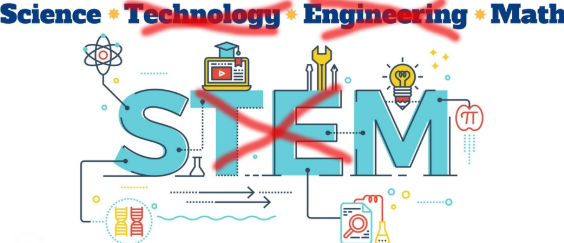It’s been one heck of a year. Personal tragedies aside (and they were quite epic in scale), my year in teaching has been difficult to say the least.
I began the year suddenly being asked to fill the shoes of our head of computers and IT. He is a dynamic, patient, kind man who is adored by all who know him; I am not. The chances of me filling his shoes satisfactorily were not likely, but I was the only other person in the school with any IT experience, so it fell to me.
I was asked to field a robotics team (never before done) and maintain a computer club whose sole purpose appeared to be allowing socially derelict grade 10 boys the opportunity to swear at each other using an astonishing array of racially insensitive epithets, while playing FPSs on school PCs.
With no training or planning, I suddenly found myself teaching a course I almost failed in high school and a pilot course on new equipment that didn’t work. Oddly enough, this wasn’t really a concern for me, I love in-class challenges, and I beat up the tech to make it functional. A couple of years ago I did an inter-disciplinary media arts program for (very) at-risk students. It almost killed me, but I actually enjoyed the edginess of it (it was immediately cancelled in spite of being labelled a great success), but I digress.
At first I was excited to get back into coding, something I genuinely enjoyed as a child (I used to type whole programs out of COMPUTE! magazine, then mod them, just for fun!), but that was before my computer science teacher implied that I wasn’t competent and shouldn’t be there. Still, the thought of getting back into coding really appealed, I was excited to teach the course I almost failed.
That was before I started averaging 40-50 emails a day, mostly from people who couldn’t be bothered to check if the damn thing was plugged in before contacting me. My days were spent running around the school, plugging things in and restarting them, and constantly (and repeatedly) resetting students (who seemed incapable for remembering what they’d just typed) passwords.
Between pointless support based on shear laziness, the occasional genuine problem, students vandalizing equipment and some truly odd IT purchases (a wireless TV system purchased by student council a few years before that simply would not work), I typically missed lunch, had no prep and was buried in IT support and ordering; all while trying to teach three new classes in two departments I’d never taught in before, while being a department head for the first time. I never got that chance to model teaching my own re-introduction to programming, and struggled to be able to appreciate what my students were doing from a distance… very frustrating.
I kept coaching soccer, maybe not the wisest move considering, but I genuinely enjoy doing that. I don’t really remember much from the beginning of the year. Between multiple deaths in the family and the crushing weight of work, and knowing that I couldn’t spent the time I needed to on courses I had no experience with, I felt like I was doing too much, and none of it well.
The beginning of the year madness settled down, and soccer season ended. I staggered out of semester one feeling like I hadn’t done anyone justice, but I was still on my feet.
Semester two consisted of three more new courses I’d never taught before in two departments I’d never been in before. Once again, I tried to balance the teacher in charge of computers thing with actually teaching (I imagine this is much easier when you’re teaching things you’re familiar with). Again and again I tried to go out on a limb and push technology growth in the school, sometimes successfully, sometimes not, usually to scowls and complaints.
March Break rolled around and my first ever international field trip started with me on a buzzy high. We drove down to Pearson at 2am in the morning, met up with our kids and prepared for a life-altering nine days sharing our love of Japanese culture. Out of a 3 hour line in US customs we saw some footage, but left when we were told everything was reopened. In San Francisco we got turned back. I got back into my own bed 23 hours and 9000 kms after I woke up, having had students crying on me, a strange kind of survivor’s guilt and an exhausting and pointless trip across the continent (twice). And so ended my first international field trip experience.
In the weeks that followed we were accused of incompetence for not knowing what was happening while in customs lockup (or guessing what was going to happen next at Fukoshima), we had to fight for our students to get their money back, and were treated as a bothersome inconvenience by the travel company and our board. At no point did anyone ask us if *we* were alright, even after one of us had to cut their teaching time to get a grip on things. I can’t speak for my colleagues, but I think we felt that we were being blamed for even trying to stage the trip.
At the end of the year I spent my extra exam day not getting marks and comments in order, but helping prepare the school for a 70 computer update, all while hearing constant complaints from people, some of them department heads, about how we better not mess anything up, and they better not lose anything on ‘their’ computer.
Difficult administrators, puerile teachers, arrogant students, and a crushing work/life combination made this a year to remember. At our end of the year meeting teachers were being rewarded for falling out of canoes and having to teach difficult classes, I just wanted to find the door and get out. Ending the meeting with a (attempted in humor) “teachers can go on summer break and wonder what working people do” felt like the right finish to this year; I would have laughed, but I’ve lost my sense of humor.
I now know what an anxiety attack feels like, and it seems like once you’ve had one, they are much easier to get again. Jittery and exhausted is how I feel; I don’t want to go back.
My foray into department headship and my willingness to leap into the breach when needed has put me in a bad place. I said to a colleague at the end of the year, “I don’t feel tired, I feel broken.”














